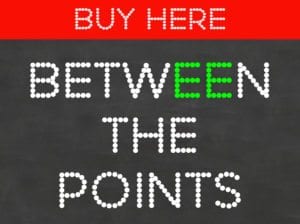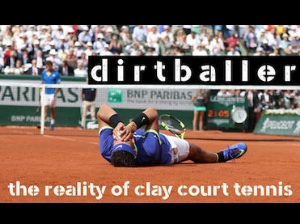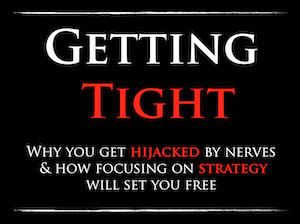Roger Federer @ #usopen
Flushing Meadow used to be a very happy hunting ground for Roger.
From 2004 – 2008, he won 35 straight matches, and 5 titles.
Those were incredibly good times for the Swiss star.
Not so, lately.
He lost in the 2009 final to Juan-Martin Del Potro, and has only been to one semi-final since. It’s definitely been some lean years in the Big Apple. Let’s break down exactly what’s been going on at the last major of the season.
Points Won in New York
2000 – 2014 = 55.2%
Roger first started playing main draw in New York in 2000, so this number represents every year he has competed at the U.S. Open. Reaching 55% points won is a serious milestone in tennis, and pretty much cements you as either number one in the world, or extremely close. It’s also 1% better than his career average.
2003 – 2014 = 55.5%
Roger won his first Grand Slam in 2003 at Wimbledon, so you can basically say Roger became Roger from that year onwards.
2005-2014 = 55.6%
That represents the last 10 years – a nice round number to evaluate his greatness at Flushing Meadow.
2005-2014 (only victories) = 56.8%
This is where things get very interesting. If you only count his wins in New York over the last 10 years, his win percentage only rises 1.2% – not that much, but still right at the vey top of the ceiling of what’s possible in our sport.
2005 – 2014 (only losses) = 47.4%
So while all wins only moved 1.2% better, all losses plummet 8.2% from 55.6% down to 47.4%. When Roger has lost, it has really moved the needle a lot.
2000 – 2014 (Record 74-10)
We have been incredibly fortunate to see Roger play 9977 minutes in NYC during the past 15 years. The five consecutive victories came at the peak of his powers. Let’s break down his game by serving and returning patterns to gain more understanding as to why he has been so incredibly dominant.
U.S. Open Serving
Aces = 841
Double Faults = 202
That’s a pretty good ratio right there. So basically for every double fault Roger hits, he backs it up with 4.2 aces. He has averaged 10.5 aces/match and only 2.5 double faults. Not too many players in the history of our game can claim such a solid serving ratio.
1st Serve % = 62%
That’s exactly the same as his career average, so he is right where he needs to be to succeed. It’s actually right in the sweet spot for what pretty much everyone on the planet should be trying to achieve in getting their first serve in. Too much higher, and you are not really going after it enough. Too much lower and you are not getting the benefit of getting it in enough.
1st Serve Points Won = 80%
This is 3% higher than his career average, suggesting he hits his spots better in New York, and probably finds a few more forehands as the first shot after the serve. It must be nice to make 10 first serves, and know on average, you are only going to lose only two of them.
2nd Serve Points Won = 57%
This is the same as his career average, but the number is such a total joke. It’s ridiculously high. Rafael Nadal is also at 57% over his career, Novak Djokovic is 55%, and Andy Murray is at 52%. Dominating in this area goes a long, long way to creating his legend status.
Service Games Played 1305
Return Games Played 1264
Roger has enjoyed playing 41 more service games than his opponents. How in the world is that possible? Well, it probably comes from serving first more often to begin matches. It all adds up in the long run.
Total Service Points Won = 70%
That’s just 1% higher than the rest his career average, so nothing too startling here. It’s not like he morphing into some type of serving machine in New York – he is definitely taking care of business, though.
Returning
1st Serve Return Points Won = 34%
That’s one percent better than his tour average. It’s just such a tough task to do well against your opponent’s bombing first serve. So when you look at a one percent rise there, it’s significant.
2nd Serve Return Points Won = 53%
Roger is 2% better than his career average in this area, so we are starting to identify where the brilliance generates from. Doing well against your opponent’s 2nd serve is a monster deal, as it provides more break point opportunities, and ultimately, more breaks of serve.
Break Points Converted = 43%
That’s 2% better than normal. When the big points roll around, Roger steps up even more in the Big Apple. Converting break points is a massive stat in tennis – much more than break point opportunities. It ultimately does not matter if you have 3 or 23 break point chances – how many did you reach out and take is all that matters.
Break Points Saved = 67%
That’s the same ratio as Roger’s career, so nothing standing out here. It is a very solid number – making it very tough to break the Swiss star at Flushing Meadows.
Total Return Points Won = 42%
This is a significant 2% higher than his tour average. On the big stage on Arthur Ashe, he is winning more points on his opponent’s serve, which is a direct line to winning more matches.
Can Roger win it again this year?
There is no question he is one of only a handful of players that have a legitimate shot of winning the 2015 U.S. Open. There are 256 players (main and qualifying) that have a shot, but realistically, it’s a very short list that can pull it off.
Favorite
Novak Djokovic
Strong Consideration
Andy Murray
Roger Federer
Stan Wawrinka
Possible – but not Probable
Kei Nishikori
Milos Raonic
Tomas Berdych
Would be a big surprise based on recent form
Rafael Nadal
Marin Cilic
Quarters/Semi’s would be a solid result
David Ferrer
Gilles Simon
Richard Gasquet
John Isner
Kevin Anderson
Grigor Dimitrov
Jack Sock
Basically, the rest of the field would have to do something pretty special to get on the lists above. Players like Tsonga, Seppi, Chardy, etc are all capable of going deep in week 1 – but week 2, at this tournament, this year, would need their best form – and more importantly, a very strong body and mind to endure.
Let’s hope for an amazing tournament, with some thrilling five-set battles. And let’s see who puts their hand up and says “This is my time to shine.”









